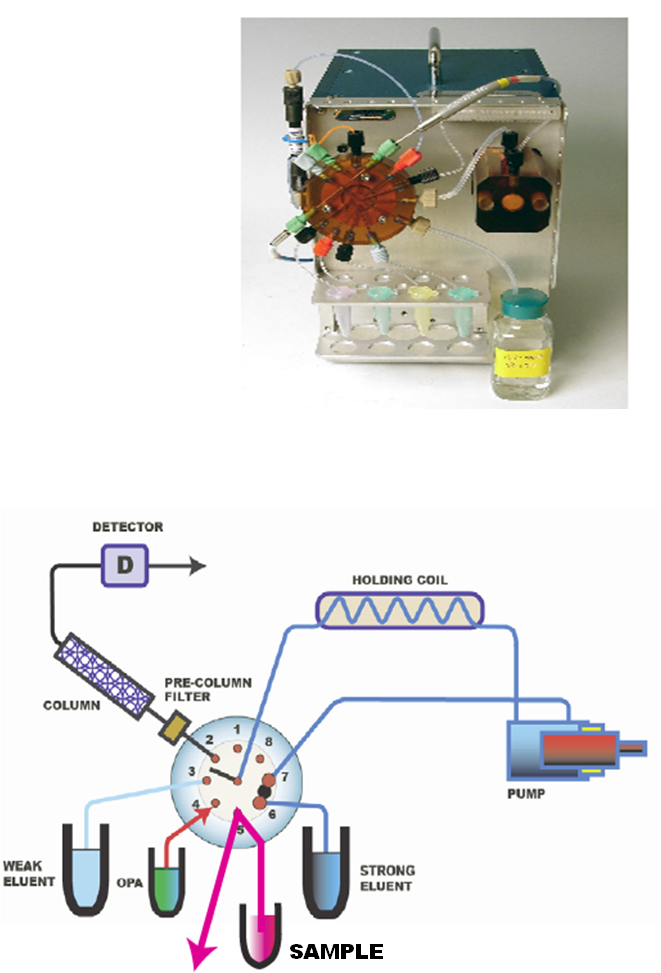Derivatization and Separation of Amino Acids
Example: How to Develop SIC Assay Protocol
4.2.2.
Amino acids are routinely assayed in foodstuffs, proteins, and peptides,
and monitored as essential nutrients in fermentors and bioreactors. The
most common method used for this purpose is reversed-phase liquid
chromatography. The advantage of RP-LC is its well-established
wide usage, which assures that laboratory personnel are familiar with
its operation. The chief downside of RP-LC for amino acid assay is the
necessity for pre-column derivatization, required to render amino
acids retentive on reversed-phase columns, and to allow their detection
by means of absorbance or fluorescence.
There exist instrument configurations that allow for precolumn
derivatization of amino acids in an automated fashion. Typically, an
autosampler is used to aspirate aliquots of the
sample and the derivatization agent from separate
vials and to inject the derivatized sample into the
RP-LC instrument.
SI Chromatography offers a far simpler solution
using an instrument that comprises only two
moving parts: a piston pump and a multiposition valve.
Monitoring of amino acids in cell culture medium
by SI chromatography is based on an assay
protocol that comprises the following operations:
1. recovery of amino acids from the bacterial culture
2. precolumn derivatization of amino acids by OPA
3. separation of amino acids
4. detection by fluorescence measurement










